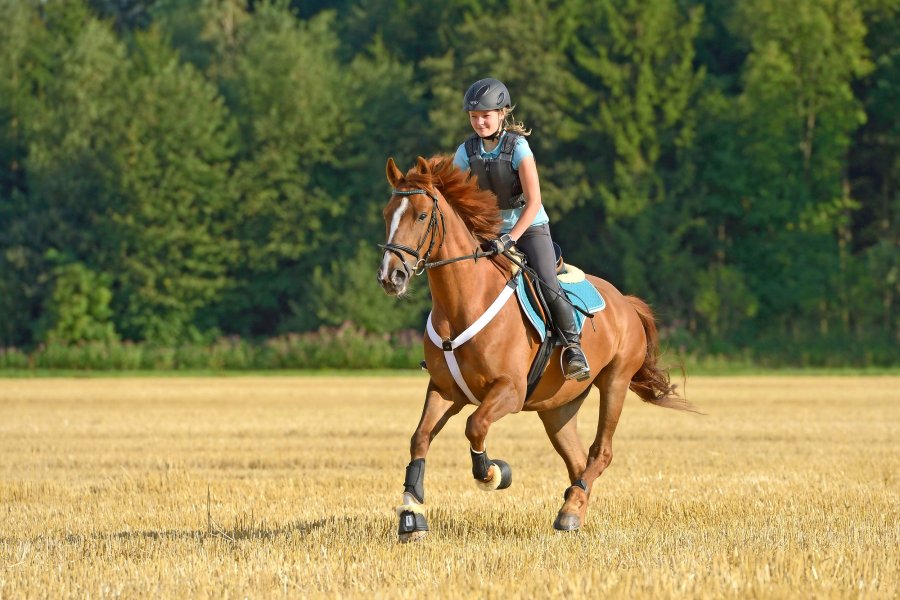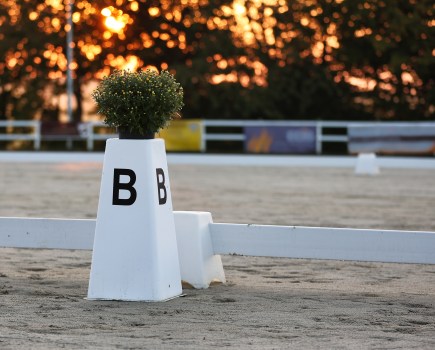Equine obesity is a serious welfare issue and diet alone won’t solve the problem — calorie-burning exercise also plays a major role in slimming down waistlines so that a horse is healthy. The harder your horse works, the more energy they use, but clearly a horse can’t gallop for 20 minutes. On the other hand, they can walk for a long time, but walking’s not the greatest way to burn calories.
Unfortunately, there is no easy way to count calories and know exactly what your horse is burning when exercising. However, there are plenty of ways you can get them working to encourage weight loss.
How hard is your horse working?
How hard your horse is working depends on a number of different factors:
Duration
Obviously, the longer your horse is exercising, the more calories they are burning.
Surfaces
Soft surfaces are harder work for your horse than hard surfaces.
Terrain (hills)
The least amount of energy is used on a slight downhill slope. Uphill work can significantly increase energy consumption. For example, trotting up a 5% incline is 1.6 times harder than trotting at the same speed on the flat.
A 10% incline is over twice as hard as the same speed on the flat.
Rider weight
Exercising with a rider is harder work than without. A heavier rider requires the horse to use more energy still.
Weather
If you exercise in the warmer part of the day your horse will use more calories than if you exercise in the cool of the morning.
Direction
Turning uses more energy than exercising in straight lines. The tighter the turn, the more calories are used.
Pace
Varying the horse’s pace/speed (ie, speeding up and slowing down) uses more energy than exercising at a constant speed.
Transitions
Transitions between gaits use more energy than staying within a gait.
Gait
Each horse has a speed within each gait where they are at their most efficient, which means they use the least amount of energy. A slow or fast walk or a slow or fast trot use up the most energy compared to a walk or trot speed in the middle of a horse’s speed range in each gait.
Best calorie-burning exercise for horses
Vary the pace
The best way for a horse to burn calories is to use a combination of trotting and cantering. So, per minute of exercise, trotting (at 3.5m/s or 210m/min, or 7.8mph or 12.6kph) uses 2.3 times as much energy as walking (at 1.5m/s or 90m/min, or 3.4mph or 5.4kph).
Slow cantering (at 7m/s or 420m/min, or 15.7mph or 25.3kph) uses up to twice as much energy per minute compared with trotting.
Having said that, going fast or slow within walk and trot can mean that your horse uses up more energy. However, this can also increase the risk of injury and so it is not advisable.
Lunging
If your horse is overweight, it’s really important that you aren’t tempted to just get on and start working them hard. An overweight horse’s joints, tendons and ligaments are already under increased stress due to their excess weight. The weight of a rider on top coupled with hard work could easily lead to injury.
For this reason, it’s advisable to start with lunging and walking in-hand. Ridden work at walk and trot can then be introduced slowly and you can build up to both ridden and lunge work each day — perhaps riding in the morning and lunging in the evening.
The size of the lunge circle determines how hard your horse has to work. The smaller the circle, the more calories will be burned, but this can also increase the risk of injury.
Exercising in a rug
Rugs can also be used to make horses work a little harder without putting more strain on tendons, ligaments and joints. In the same way that in warm weather your horse will have to work harder, exercising wearing a rug will increase the effort they make.
However, this must be done with care to ensure that your horse doesn’t get overheated. They may also require additional electrolytes in their feed if they sweat more than usual.
Your horse’s breathing is the best guide to their temperature. Blowing hard is the sign of a hot horse.
Monitor their heart rate
The most reliable way to know how hard your horse is working so that you can avoid working them too hard is to use a heart rate monitor. The harder they’re working, the higher the horse’s heart rate will be.
So, if your horse appears to be telling you that they can’t work any harder but their heart rate is only 120bpm (beats per minute), then you know they’re probably being lazy.
If, on the other hand, their heart rate is 200bpm, then you are probably working them too hard for a weight loss programme. Ideally, you want to be working for prolonged periods in the 120-160bpm range.
A heart rate monitor can also be an excellent guide for when to stop exercising a horse. If you’ve been out hacking for 40 minutes and you stop, if their heart rate isn’t back down below 100bpm within two minutes, then they’ve done enough for that session and it’s time to walk home.
Track and field systems
If your horse is turned out during the day, then a track system is worth considering if you have the facilities and option to set one up. In some research, horses on a track system have been shown to cover greater distances.
If your horse is turned out (or even stabled), don’t be tempted to over-rug them as this will reduce the amount of energy they have to use to keep warm and could lead to weight gain.
Focus on burning carbs
As I’ve already said, varying the pace your horse works is effective calorie-burning exercise that can aid weight loss. This is for two reasons. With constant trot or slow-medium canter exercise over time, the horse’s body switches from burning carbohydrates (muscle glycogen) to burning fat.
Fat is much more efficient as a fuel than carbohydrate. We want to burn as many calories as possible, so by speeding up and slowing down — and even having a short, fast canter every 10 minutes — this keeps the muscles burning carbohydrate as opposed to letting them switch to burning fat.
Past lameness issues?
Clearly, the more days you exercise your horse the more calories they will be using and therefore burning, and the fitter they will get. But if they’ve had any lameness issues, then rather than six days of training and one day off, consider only two or three days’ training before a day off.
Similarly, if you’re trying to keep your horse fit and ticking over until their next competition, if they’ve previously been fairly fit, they may not need to be ridden every day. Once they have some fitness, horses can be maintained on a reduced amount of weekly exercise much better than a person can. So perhaps only three to four days’ riding and one or two days’ lunging would work.
With an overweight horse who needs to lose some ‘condition’ — or what we should really call it, fat! — ideally start with some lunging, time on a horse walker and/or in-hand work before climbing on board. Start slowly and aim towards hacking at variable paces.
Change one thing at a time
An important rule is to increase the speed (effort), the duration of workouts, or the number of workouts per week, but never more than one of these at a time. So, in the first few weeks do a 30-minute hack five times a week, then a 45-minute hack five times a week, and so on.
If your horse was recently fit, they will probably be able to maintain their fitness and stay sounder on a reduced amount of work.
![]() Have you heard about Your Horse’s #FitNotFat campaign? Equine obesity is an enormous welfare problem and we’re on a mission to provide owners and riders with the knowledge, skills and information you need to keep your horse in tip-top health. It could be life saving! Find out more
Have you heard about Your Horse’s #FitNotFat campaign? Equine obesity is an enormous welfare problem and we’re on a mission to provide owners and riders with the knowledge, skills and information you need to keep your horse in tip-top health. It could be life saving! Find out more
Dr David Marlin’s members area on his website provides access to science-backed information spanning a wide range of horse-related matters, including webinars, latest research findings, independent product trials and celebrity interviews, with the additional opportunity to join a friendly, supportive private community of fellow horse lovers. Pay-monthly membership is £8. Join here.










